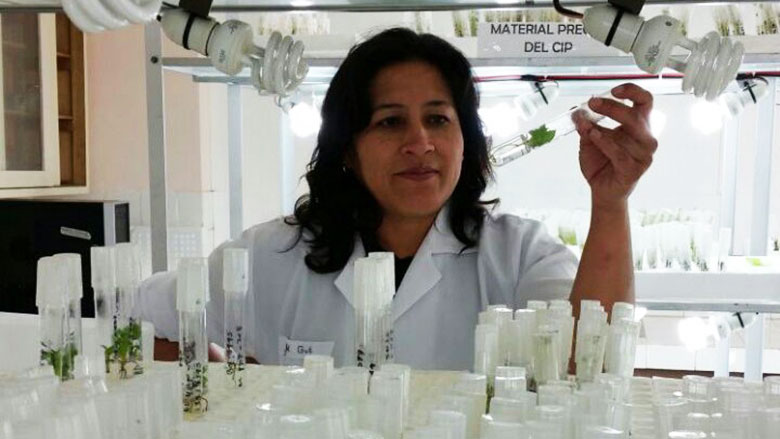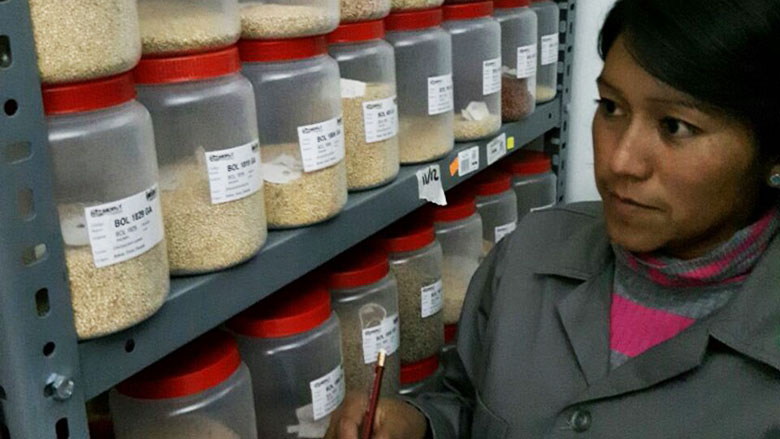Challenge
Agriculture has been one of the most important sectors in Bolivia’s economy, contributing about 13 percent of GDP and accounting for just under 30 percent of total employment. Yet performance in the agricultural sector was disappointing; productivity in Bolivia was substantially lower than in neighboring countries due, among other factors, to the widespread use of antiquated technologies, limited uptake of modern inputs, and lack of knowledge and skills among farmers. With many in the population dependent on agriculture as their principal livelihood, increasing agricultural productivity was a national priority. Unlike many other countries in the region, which had mature public innovation institutes and systems to address technological challenges in the agriculture sector, Bolivia had only the National Institute of Agriculture and Forestry Innovation (Instituto Nacional de Innovación Agropecuaria y Forestal, INIAF), a recently formed national innovation institute, along with a dispersed, largely uncoordinated set of public and private research organizations.
Approach
The Agricultural Innovation and Services Project was undertaken to strengthen INIAF’s capacity to lead the national system for innovation in agriculture and forestry while at the same time supporting research, technical assistance, and seed certification activities. The primary emphasis during the project period was on pursuing shorter-term institutional objectives: specifically, strengthening INIAF and the national agricultural innovation system. Over the medium to long-term, it was believed that these activities would increase agricultural productivity, enhance food security, and improve the welfare of the rural population.
Bank financing responded to the shared vision of the Bolivian government and the Bank that the public sector would assume a leading role in mobilizing a diverse coalition of partners to generate the innovations needed to drive agricultural-sector development. Using a competitive grants mechanism, the project financed an extensive network of public-private collaboration that had previously been uncommon in Bolivia.
Results
Between 2012 and 2017, INIAF’s capacity was strengthened, as reflected in the following key outcomes:
- Improved Flow of Innovations: By project close, at least 20 innovations introduced by INIAF in collaboration with national and international partner institutions had been adopted in the field by smallholder farmers. These innovations included new varieties of cereals (maize, wheat, rice) and vegetables (carrot, beet, onion) with high yields and greater tolerance to biotic and abiotic stresses, as well as improved seed production methods and more efficient silage systems. The project not only provided funds but also introduced an alliance-based approach that allowed INIAF to effectively introduce, assess, validate, and disseminate improved technologies. Adoption is expected to accelerate significantly in the coming years, as these technologies are delivering substantial economic benefits for farmers.
- Increased Availability of Certified Seed: The performance of INIAF’s Seed Program exceeded expectations, as reflected by the certification during the life of the project of more than 109,000 incremental tons of seed. INIAF’s seed testing laboratories and seed conditioning plants benefited from major upgrades financed with project resources. Procedures for planning, implementing, and monitoring seed certification processes were completely overhauled and automated, allowing the INIAF Seed Directorate to achieve major operating efficiencies even as it significantly scaled up the volume of seed certification activities.
- Enhanced Collaboration Among Innovation Agents: At project close, INIAF was serving as the leader of a national innovation network comprising more than 130 research and extension agencies at the national and regional levels. With the help of project financing, INIAF established national and regional innovation councils, led multiple regional innovation agendas, and financed 23 research subprojects prioritized by the regional councils and undertaken by partner organizations. INIAF’s strong leadership role was recognized by nearly three-quarters of the partners and stakeholders participating in the final impact evaluation.


